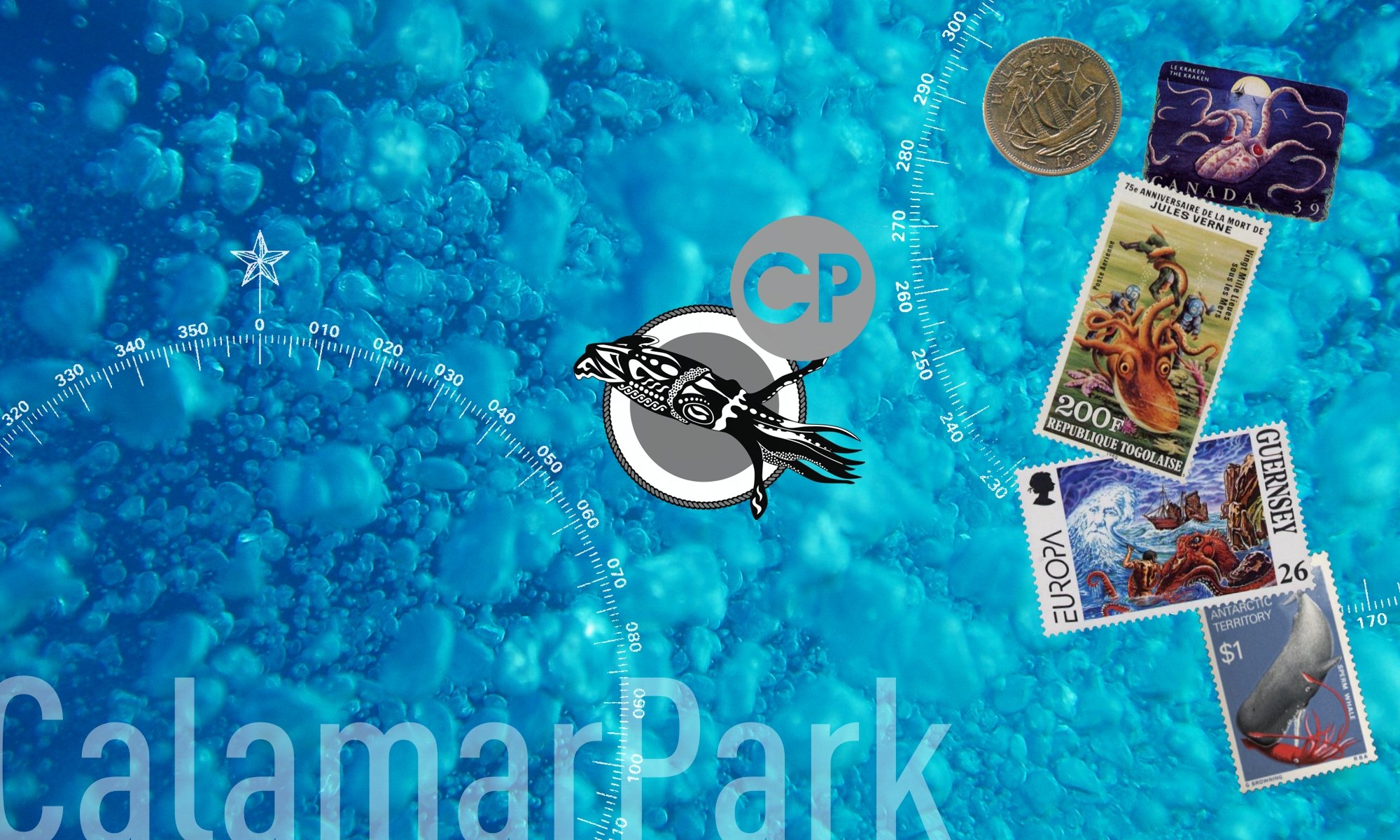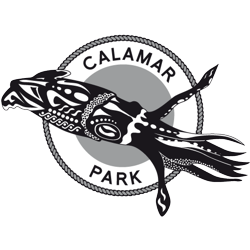 The following article was published by CalamarPark on Wikipedia in German. Feel free to correct grammar mistakes of this translation and publish it on Wikipedia in English. The illustration has also been made available by CalamarPark and is accessible on Wikimedia under the Creative Commons Licence [CC BY-SA 4.0].
The following article was published by CalamarPark on Wikipedia in German. Feel free to correct grammar mistakes of this translation and publish it on Wikipedia in English. The illustration has also been made available by CalamarPark and is accessible on Wikimedia under the Creative Commons Licence [CC BY-SA 4.0].
HUNUC (abbreviation for Habitat of the University of Natal Underwater Club) was South Africas first underwater laboratory. However, the facility was destroyed shortly after its positioning due to conceptual errors and bad weather conditions.
HUNUC was developed from 1970 [1] by Brent Addison (28) and John Gibbs (19), who were both employed at the Council for Scientific and Industrial Research (CSIR), and supported by the Oceanographic Research Institute in Durban. In 1972 it was to be positioned about 550 m off Addington Beach, Durban, at a depth of 10 m and cost between 26,000 and 30,000 Rand.
Contents
Specifications
HUNUC consisted of two decommissioned steel syrup tanks donated by the sugar company Huletts. The tanks were welded together in such a way that, with a total height of 5.9 m, two floors with an internal width of 1.5 m were created.[2] The lower floor contained compressed air cylinders and ballast. The upper floor housed a laboratory area for research programs and technical experiments and contained sinks, toilets, shelves, cupboards, fish tanks and benches; the living area for sleeping, relaxing and eating was equipped with a window, four folding beds and a refrigerator. [3] The facility also had a hot shower with a water tank of 75 litres (20 gallons) [4] as well as telephone and camera systems. Like other habitats, the habitat was painted in yellow to make it easier to be seen underwater. The construction had a total weight of 45 tons, of which 20 tons were scrap ballast. It was supported by six support legs on which ballast tanks were mounted.
HUNUC was an ambient pressure habitat; the aquanauts were thus saturation divers. Due to a lack of better knowledge at that time, they were supposed to breathe a “reverse gas” for two hours at the end of their mission, presumably a breathing gas with an increased oxygen content, in order to prevent decompression sickness.[3] The life-supporting systems were donated by Draegerwerke in Germany; Jürgen Schmidt visited HUNUC and described it as “the most ambitious amateur project of this type worldwide”.
Planned missions
For HUNUC a program was planned in which four teams of four people each would spend a week in the habitat. The main purpose was to observe the marine world at night and research on sharks in their natural environment, which had been virtually impossible with conventional diving techniques until then.[3][5] A local beach hotel agreed to donate three meals a day for the duration of the mission.[6]
After almost a year of delay due to lack of funding, on 12th of April 1972 the Daily News launched a call for donations of 20 tons of scrap metal for ballasting[7], which was granted the following day[8].
On 18th of April, the local citizens had the opportunity to visit the habitat before positioning it in the sea[9].
The first two teams should consist of the following persons:
1st team
- Brent Addison, Scientist at CSIR and Project Organizer
- Dr. A. E. F. Heydorn, Director of the Oceanographic Research Institute, Durban
- J. Joubert, Lieutenant Commander of the South African Navy.
- J. Gibbs, Natal University
2nd team
- D. Smith, Natal University
- T. McClurg, CSIR
- I. S. Scaaf, South African Navy
- P. Zoutendyk, University of Cape Town
It was planned that during the missions excursion dives with two persons would be carried out alternately. These were to take place at 6, 11, 18 and 21 hours[10]
Support
Although HUNUC started as an amateur project, it also received moral support from Dr. Sylvia Earle-Mead and Dr. Robert Helmreich of Tektite 2; Dr. J. Tenney, Project Manager of Tektite 1 and 2; Dr. Wicklund, Project Manager of Hydrolab; Dr. G. Ulig, Chief Diver of the habitat Helgoland. This ensured international relevance. Dr. A. E. F. Heydorn, Director of the Oceanographic Research Institute in Durban, travelled to Germany to visit the Habitat Helgoland in the run-up to the mission.
As a supply ship, the South African Navy provided the diving ship Fleur, which was to anchor above the Habitat during the missions. In addition to a decompression chamber, it also contained an emergency generator for energy bottlenecks.[11]
Chronology
- 3rd of May 1972: The Habitat is launched in front of the marine port of Durban on Salisbury Island. The port authority insists on a certificate of seaworthiness, but this exists for ships and submersibles, but not for underwater stations.[12] The visibility at the site of operation now drops to around 6.5 m.
- 7th of May: The initiator of the project, Brent Addison, breaks a foot bone as he is hit by a 113 kg component[13].
- 21st of May: HUNUC is towed to its location and sunk, but it detaches from its anchorage and begins to vibrate with the waves and hit the reefs later, demolishing the ballast tanks and causing increasingly severe damage to the structure. The anchorage is considered to be irreparable from that moment on. It is proposed that the habitat be partially flooded to reduce buoyancy, but the decision is made to bring canisters filled with water into the habitat so as not to damage the structure. The next morning, five to ten tons of ballast are to be added.[14] Poor visibility, high waves and the onset of night lead to the interruption of rescue work, so that the habitat is left unmanned until the next morning.
- 22nd of May: The diver Max Smale gets his foot between the supporting structure and the habitat and injures himself severely so that he has to be removed quickly.[15] The ballast tanks are salvaged the same day
- 23rd of May: For the first time, HUNUC is considered to be abandoned.[16]
- 24th of May: There is about 40 cm of water inside the habitat. One hopes for calmer sea to remove further ballast, to let the habitat emerge and then to be able to tow it away. However, the weather remains rough. All attempts to work on the habitat are classified as life-threatening and are broken off, so that one can only watch how the habitat strikes against the reef. The supply ship Fleur leaves the site.[17]
- 28th of May: It is finally decided to leave HUNUC to its fate.[18]
Koblick and Miller came to the conclusion that the center of gravity of the habitat was very high due to the construction and that the ballast was not sufficient. But only in connection with bad weather conditions this led to the failure of the project.[2]
References
- [1] Divers will spend a weekin under-sea test house off Durban. Sunday Express, 16th of April 1972.
- [2] I. Koblick, J. Miller: Living and Working in the Sea. Van Nostrand Reinhold Company Inc., New York 1984, ISBN 0-442-26084-9, p. 325.
- [3] Lindsay Evans: University aquanauts to live off Natal reef for research. Sunday Times, 1972
- [4] Brent Addison: H.U.N.U.C. almost ready to go. 1972.
- [5] The ox wagon submarine. South African Digest, 30th of April 1971.
- [6] Four-star meals will go beneath the waves. Daily News, 11th of April 1972.
- [7] Hunuc hitch: unless it sinks they’re sunk. Daily News, 12th of April 1972.
- [8] Hunuc plea gets heavy response. Daily News, 13th of April 1972.
- [9]Under ocean home ready. The Natal Mercury, 10th of April 1972.
- [10] Teams named. The Natal Mercury, 12th of April 1972.
- [11] Ron Steele: Underwater home is all set to go. Sunday Times, 30th of April 1972.
- [12] Hunuc goes in the water. Daily News, 4th of May 1972.
- [13] Hunuc leader injured. Daily News, 8th of May 1972.
- [14] Don Marshall: Hunuc is bounced on seabed by storms. Rand Daily Mail, 22nd of May 1972.
- [15] Diver hurt in Hunuc drama. Daily News, 22nd of May 1972.
- [16] Don Marshall: Hunuc in life and death struggle. Daily Mail, 24th of May 1972.
- [17] Wild seas pound sunken lab. The Natal Mercury, 25th of May 1972
- [18] Hopes for new Hunuc. Daily News, 29th of May 1972.
Partially translated with www.DeepL.com/Translator

